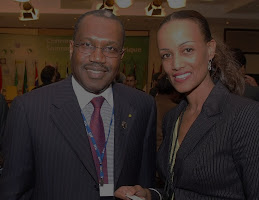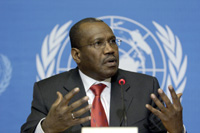Project Initiative:
CIIN is new strategic networking initiative that is central to the achievement of an African Information Society on the basis of Regional Cooperation and Integration.
CINN provides an inclusive, multi-stakeholder global forum and platform for cross-sectoral policy dialogue and advocacy and by catalyzing action oriented partnerships encouraged under the GAID umbrella.
"our current programmes are based on two major pillars: Promoting regional integration in support of the African Union vision andpriorities, and Meeting Africa's special needs and the emerging global challenges".
Mr. Abdoulie Janneh, UN Under-Secretary-General and Executive Secretary UNECA Addis Ababa, Ethiopia, 1 May 2007 , CODI-V meeting.
Regional Cooperation and Integration:
- Focuses on the development of Information and Knowledge Networks and Resources for critical sectors I.e. agriculture /natural resources transport & communication, Public health, education, business & commerce
- Requires large scale deployment /implementation of ICT infrastructures.
- Needs governmental policy & Strategy formulation, regulatory frameworks .
- Requires significant financial Investment, economic de-regulation & open competitive business environments to ensure full Private Sector participation.
- In line with the NEPAD, and could serve a basis for African Integration and Objectives of the African Economic Community /African Union.



.jpg)








